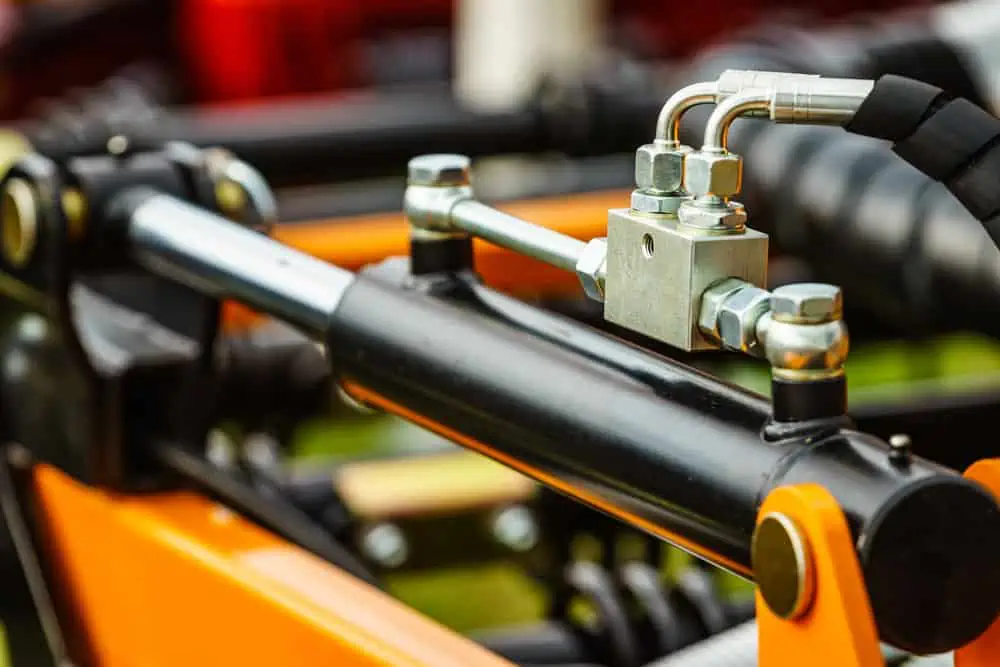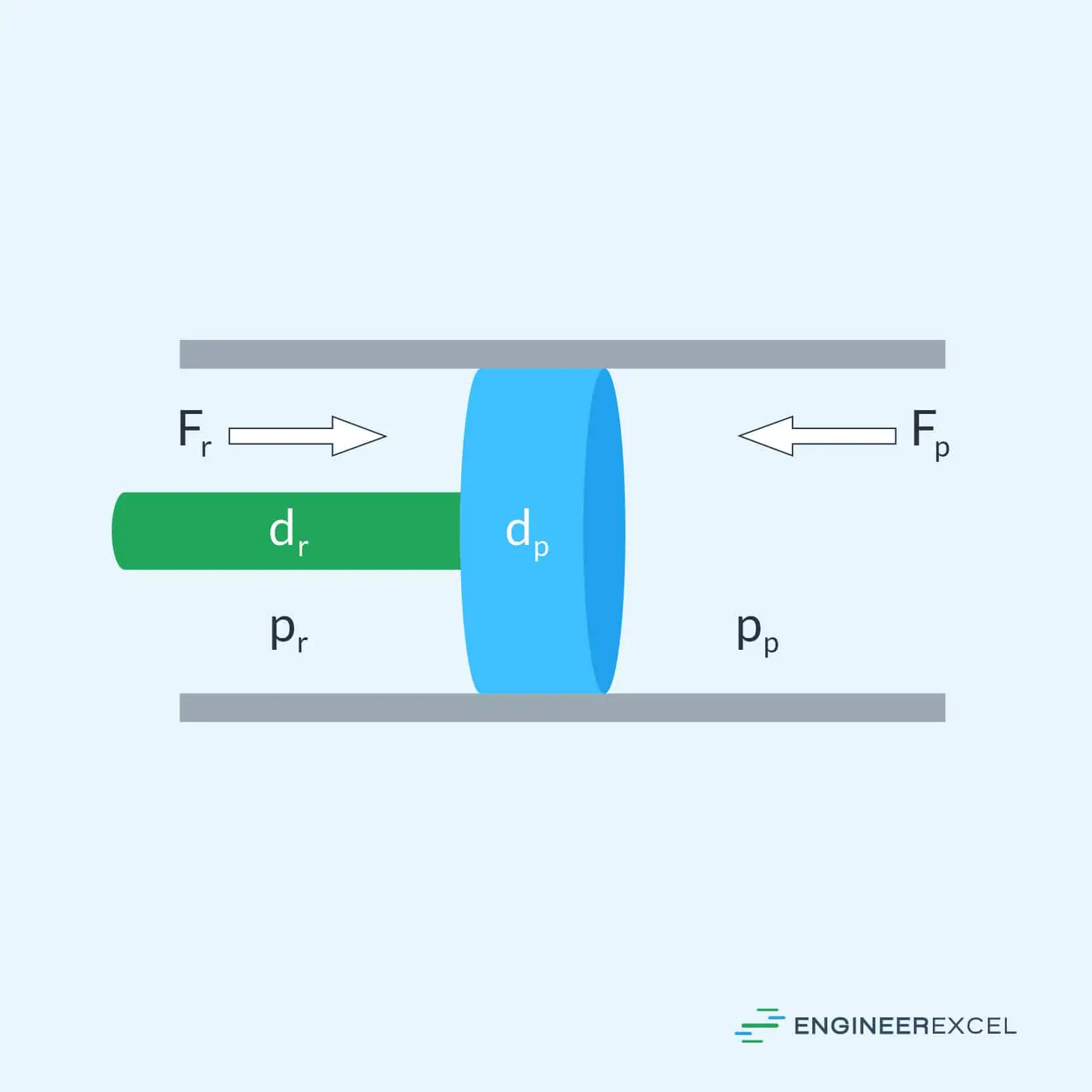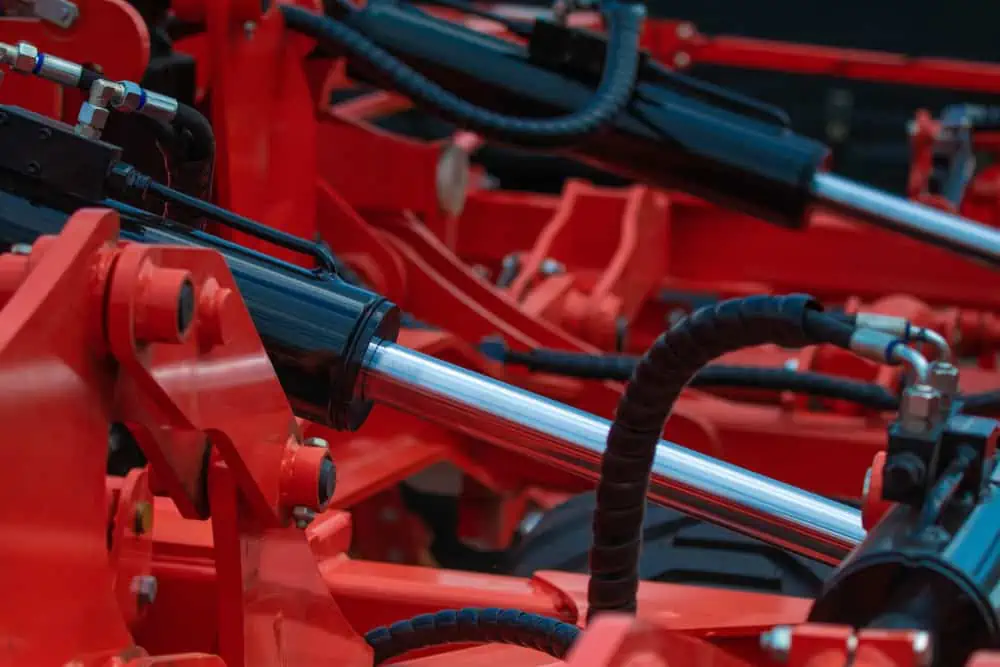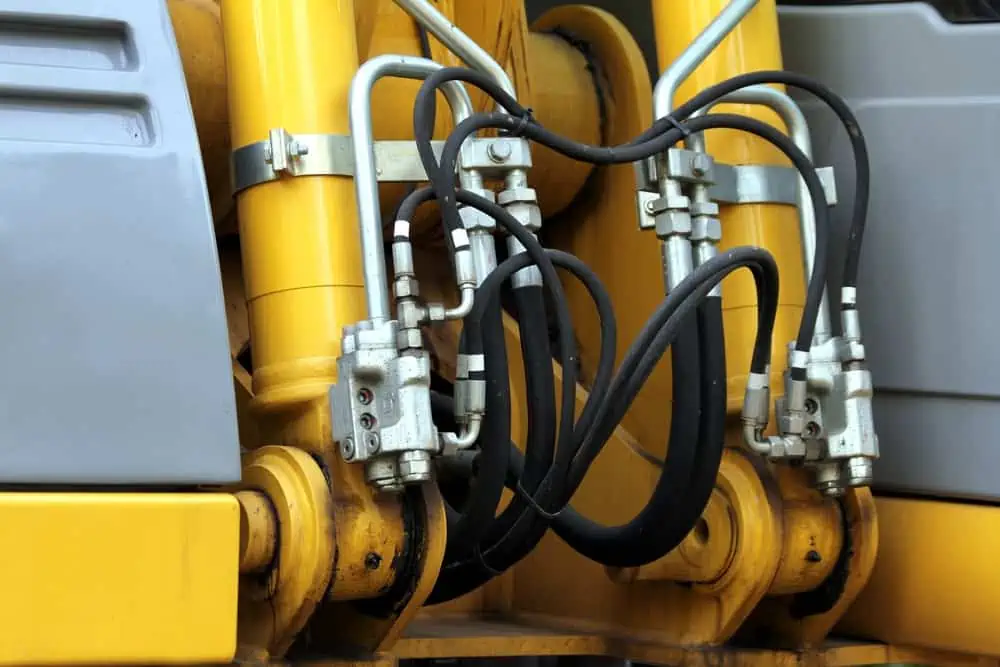A hydraulic cylinder transmits and scales a unidirectional force. They are used to transmit power in numerous mechanical applications.
Hydraulic Cylinder Force Calculator
Hydraulic Cylinder Operating Principle

Hydraulic cylinders operate on the principle of pressure and effective area, as shown by the following equation:

Elevate Your Engineering With Excel
Advance in Excel with engineering-focused training that equips you with the skills to streamline projects and accelerate your career.

where:
- Pp is the pressure on the piston side, with SI units of bar
- Pr is the pressure on the rod side, with SI units of bar
- Ap is the area of the piston, with SI units of mm2
- Ar is the area of the rod, with SI units of mm2
In a double-acting hydraulic cylinder, the piston side is the larger side and the rod side is the smaller side. The pressure of the hydraulic fluid, which is incompressible, will be different on the two sides. Such a double-acting hydraulic cylinder is shown in the following figure:

Rod Side Hydraulic Cylinder Force
The force produced on the rod side of a hydraulic cylinder is calculated using the following equation:

where:
- Fr is the hydraulic cylinder force on the rod side, with SI units of N
- pr is the pressure on the rod side of the cylinder, with SI units of bar
- dp is the diameter of the piston, with SI units of mm
- dr is the diameter of the rod, with SI units of mm
Note that for consistency of units, 1 bar = 0.1 N/mm2.
Example Calculation
For the hydraulic cylinder with rod side pressure of 10 bar, piston diameter of 25 mm and rod diameter of 5 mm, the force on the rod side can be calculated as follows:

Piston Side Hydraulic Cylinder Force
The force produced on the piston side of a hydraulic cylinder is calculated using the following equation:

Example Calculation
For the same hydraulic cylinder with a piston side pressure of 15 bar, the force on the piston side can be calculated as follows:

Hydraulic Cylinder Advantages
One of the key advantages of hydraulic cylinders is that they can generate very large forces with relatively small amounts of fluid. This is because the pressure of the fluid is much higher than it would be in an open system, such as a water hose. The pressure of the fluid in a hydraulic cylinder is typically around 1,000 to 3,000 pounds per square inch (psi), although it can be even higher in some applications. This high pressure allows the cylinder to generate extremely large forces, which can be used to lift heavy loads.

Factors That Influence Hydraulic Cylinder Force
Size Of The Cylinder
There are several factors that can influence the force generated by a hydraulic cylinder. One of the most important is the size of the cylinder. Larger cylinders generally have a larger surface area for the fluid to press against, which means they can generate more force. The design of the cylinder can also have an effect on the force it generates. For example, a cylinder with a double-acting piston (one that can move in both directions) will be able to generate more force than a single-acting cylinder (one that can only move in one direction).
Fluid Pressure
The pressure of the fluid is also an important factor in determining the force generated by a hydraulic cylinder. The higher the pressure, the more force the cylinder will be able to generate. However, there are limits to how much pressure a hydraulic system can handle. If the pressure gets too high, it can lead to system failures or ruptures hoses.

Designing For Hydraulic Cylinder Force
There are a number of ways to manipulate the force generated by a hydraulic cylinder. One option is to change the size of the cylinder. For example, using a larger cylinder with a higher surface area will generally result in more force being generated. Another option is to adjust the pressure of the fluid. Increasing the pressure will increase the force, while decreasing it will reduce the force. In other situations, reducing the back pressure that opposes motion will increase the output force of the cylinder.
